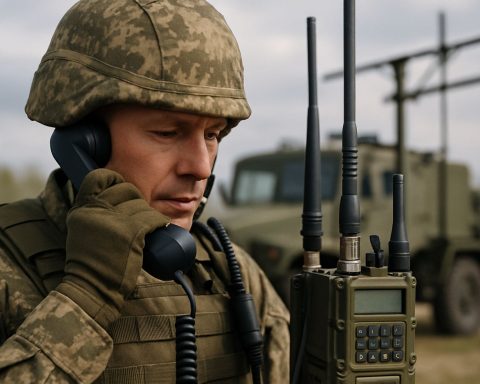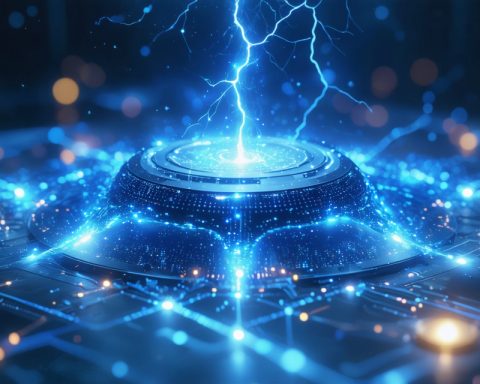- A recent innovation in quantum state tomography (QST) utilizes field-programmable gate arrays (FPGAs) combined with machine learning to overcome significant computational limitations.
- This approach reduces inference time from 38 milliseconds to 2.94 milliseconds, enhancing the speed of quantum state analysis by over 90% while maintaining accuracy within 1%.
- The technique expands QST capabilities beyond Gaussian states to more complex non-Gaussian and multi-partite quantum states, offering potential breakthroughs in quantum metrology and information manipulation.
- This development highlights the transformative power of simple tools in advancing scientific understanding, marking a pivotal moment in the evolution of quantum mechanics study.
- The synergy between FPGAs and AI model deployment offers a gateway to future discoveries, enabling scientists to explore quantum systems with unprecedented agility and precision.
A quiet revolution whispers through the corridors of physics, one that promises to reshape our understanding of quantum mechanics with stunning precision and speed. The intricate art of quantum state tomography (QST), a key technique for deciphering the mysteries of quantum systems, faces the monumental challenge of computational limitations. Yet, a recent innovation transforms this landscape, bringing laboratory-grade insights within reach of modest setups.
Imagine the gears of a clock, ticking relentlessly, each one relying on the other to keep impeccable time. Similarly, the performance of quantum computers and sophisticated instruments like gravitational wave detectors depends on the seamless functioning of their quantum substrates. Traditionally, exploring these complex quantum terrains came with hefty computational costs, akin to navigating a digital labyrinth without a map.
Enter a team of pioneering researchers, who have cracked the code by harnessing a commercially available field-programmable gate array (FPGA). In a remarkable feat, they have wielded the power of machine learning to radically enhance the capabilities of QST, making the once daunting task of characterization not just manageable but efficient. Their approach achieves real-time, high-precision analysis, ideally suited for environments where computing resources are limited.
Picture speeding down a highway after a long day, with the horizon beckoning you home. The FPGA-based technique does just that for quantum states, reducing inference time from a sluggish 38 milliseconds to a zippy 2.94 milliseconds—cutting the journey by over 90%. And while the speed of analysis leaps forward, the fidelity or accuracy of results remains nearly impeccable, deviating by a mere one percent.
This marvel is more than just a technical upgrade; it is a gateway to future possibilities. As we stand on the cusp of a quantum renaissance, this technology not only serves Gaussian states but extends its utility to the far more complex realms of non-Gaussian and multi-partite quantum states. The implications are vast, potentially catalyzing breakthroughs in quantum metrology and information manipulation.
The humble FPGA, when paired with the latest in AI model deployment environments, becomes a beacon of potential. Like an artist with a new set of paints, scientists now have a toolkit to create and explore quantum states with an agility previously thought unattainable.
In the unending quest for knowledge, this development serves as a reminder: sometimes, the simplest tools in the hands of innovative minds can lead to profound discoveries. As we usher in this new era of quantum study, the synergy of machine learning and quantum mechanics offers a tantalizing glimpse into the future—a world where the secrets of the universe unfold at our fingertips with unprecedented clarity and speed.
Revolutionizing Quantum Mechanics: A New Era of Speed and Precision
The Transformation of Quantum State Tomography
Quantum state tomography (QST) is a pivotal technique in quantum mechanics, akin to an MRI for quantum states. It deciphers the intricacies of quantum systems, which are essential for the precise functioning of quantum computers and other sophisticated devices. Traditionally, QST faced severe computational limitations, making the analysis of quantum systems cumbersome and prolonged. However, recent advancements promise to overhaul this scenario.
Breakthrough with FPGA and Machine Learning
A collective of pioneering researchers has made significant strides by integrating a commercially available field-programmable gate array (FPGA) with cutting-edge machine learning techniques. This innovative approach cuts inference time dramatically from 38 milliseconds to just 2.94 milliseconds, over a 90% improvement, all while maintaining a high fidelity with only a 1% deviation.
Features and Specifications
– Technology Used: Field-programmable gate array (FPGA), Machine Learning Algorithms
– Speed Improvement: From 38ms to 2.94ms
– Accuracy: Fidelity deviation within 1%
Implications and Industry Trends
This advancement in QST opens doors to immense possibilities in the realm of quantum computing and related fields. The methodology is not restricted just to Gaussian states, extending proficiency to non-Gaussian and multi-partite quantum states, unlocking new potential in quantum research. The rapid analysis facilitated by FPGA-based techniques could play a critical role in quantum metrology and bolster quantum information processing capabilities.
Real-World Use Cases
– Quantum Computing: Enhanced performance through rapid state characterization.
– Gravitational Wave Detection: Improved signal processing speeds.
– Quantum Metrology: More accurate measurement techniques.
Pressing Reader Questions
1. What are the main advantages of using FPGA in QST?
FPGA offers high-speed processing capabilities with lower energy consumption, making it ideal for real-time analysis of quantum states in environments where computational resources are limited.
2. How does machine learning contribute to QST improvements?
Machine learning algorithms streamline the characterization process, enhancing the precision and speed of quantum state analysis without requiring extensive computational power.
3. What are the potential limitations?
While the innovation significantly speeds up analysis, the practical deployment of FPGA-based systems may face challenges such as initial setup costs and the need for technical expertise.
Actionable Recommendations
1. For Researchers: Consider leveraging FPGA and ML frameworks to optimize QST in your lab.
2. For Industry Stakeholders: Explore partnerships with technology providers to integrate this scalable solution into existing quantum infrastructure.
3. For Educators: Update quantum mechanics curricula to include these cutting-edge techniques, preparing students for the evolving landscape.
Conclusion
The fusion of classical hardware like FPGA with modern machine learning resonates as a beacon of innovation in quantum mechanics. This development not only propels us toward efficient quantum computing but also paves the way for unprecedented exploration of quantum worlds. As we advance into this quantum renaissance, harnessing such technology becomes crucial in unfolding the universe’s most profound secrets with clarity and precision.
For more on cutting-edge technology and computing developments, visit Intel.










